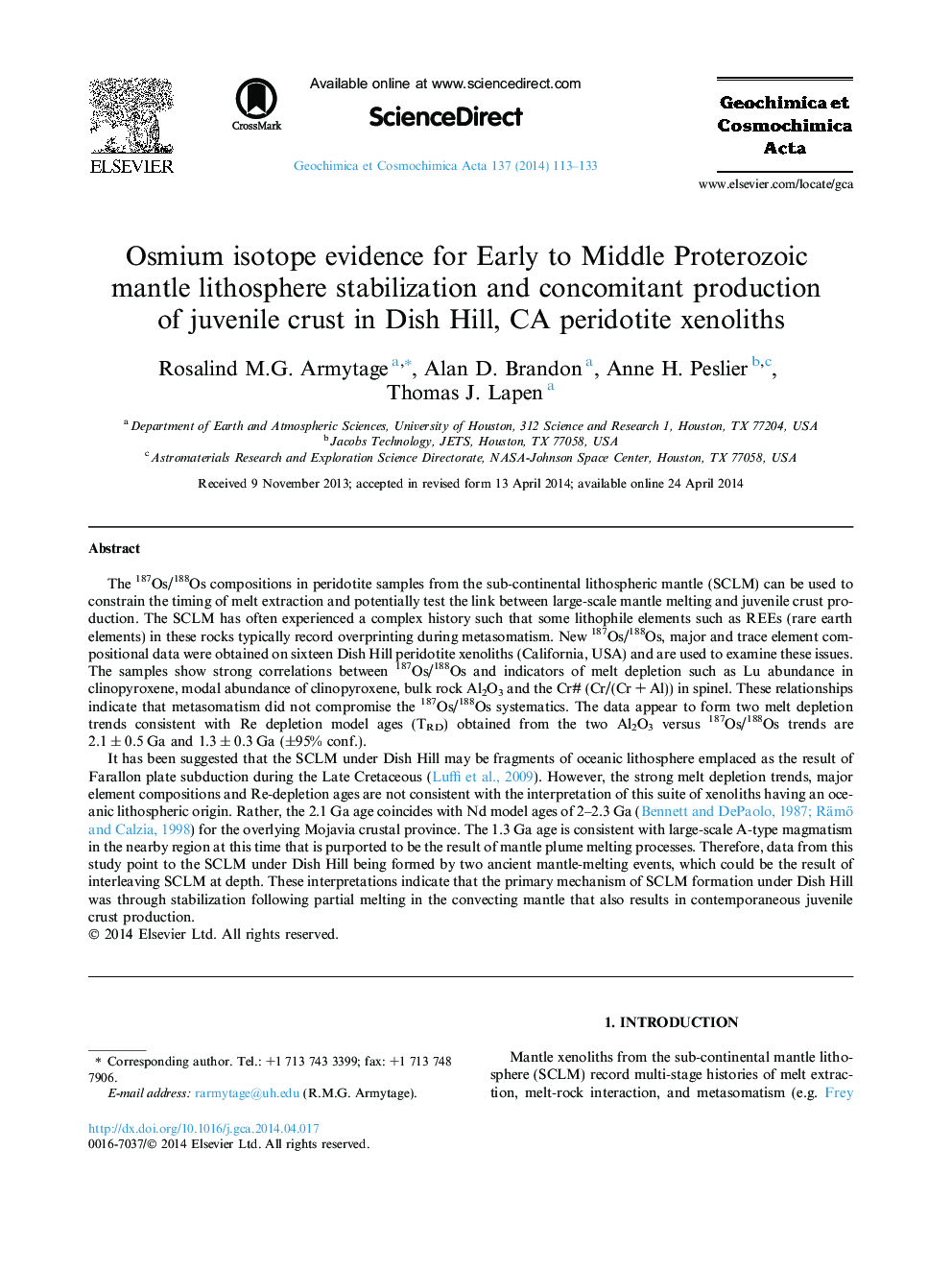| Article ID | Journal | Published Year | Pages | File Type |
|---|---|---|---|---|
| 6438583 | Geochimica et Cosmochimica Acta | 2014 | 21 Pages |
Abstract
It has been suggested that the SCLM under Dish Hill may be fragments of oceanic lithosphere emplaced as the result of Farallon plate subduction during the Late Cretaceous (Luffi et al., 2009). However, the strong melt depletion trends, major element compositions and Re-depletion ages are not consistent with the interpretation of this suite of xenoliths having an oceanic lithospheric origin. Rather, the 2.1Â Ga age coincides with Nd model ages of 2-2.3Â Ga (Bennett and DePaolo, 1987; Rämö and Calzia, 1998) for the overlying Mojavia crustal province. The 1.3Â Ga age is consistent with large-scale A-type magmatism in the nearby region at this time that is purported to be the result of mantle plume melting processes. Therefore, data from this study point to the SCLM under Dish Hill being formed by two ancient mantle-melting events, which could be the result of interleaving SCLM at depth. These interpretations indicate that the primary mechanism of SCLM formation under Dish Hill was through stabilization following partial melting in the convecting mantle that also results in contemporaneous juvenile crust production.
Related Topics
Physical Sciences and Engineering
Earth and Planetary Sciences
Geochemistry and Petrology
Authors
Rosalind M.G. Armytage, Alan D. Brandon, Anne H. Peslier, Thomas J. Lapen,
